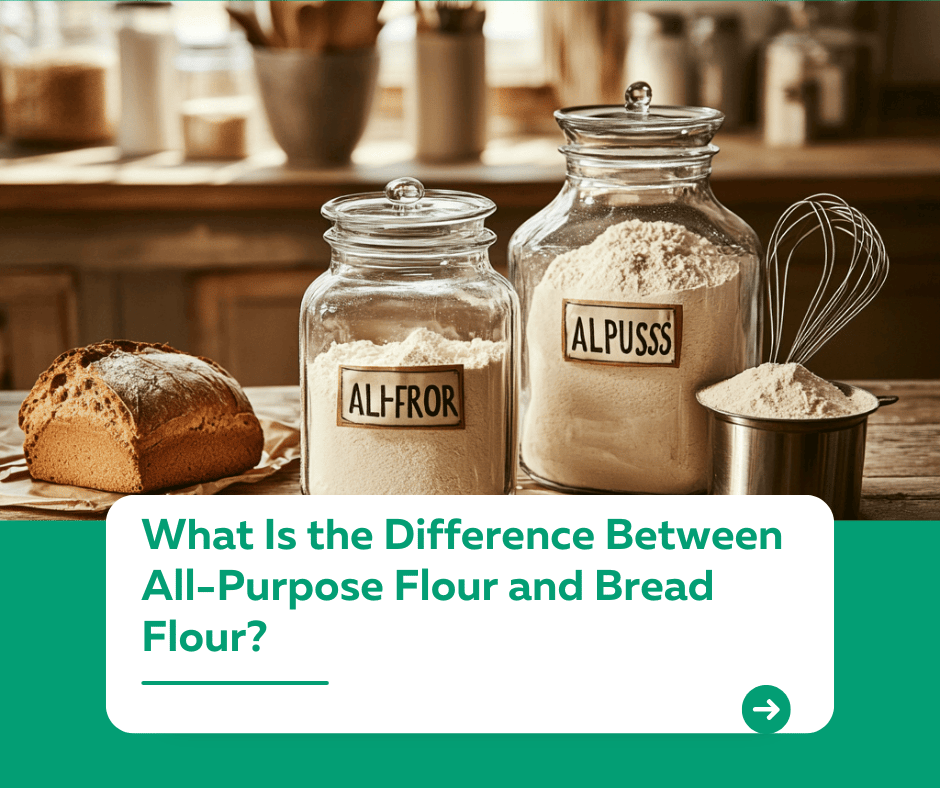
Introduction
Flour is a pantry staple, but did you know that not all flours are created equal? What is the difference between all-purpose flour and bread flour? Understanding their unique characteristics can help you achieve the best results in your baking and cooking.
1. What Is All-Purpose Flour?
1.1 Composition
- Protein Content: Contains 8-12% protein, making it versatile for various recipes.
- Texture: Milled finely to create a soft and smooth texture.
1.2 Best Uses
- Ideal for cookies, cakes, muffins, and pie crusts.
- Works well in recipes that don’t require significant structure or chewiness.
2. What Is Bread Flour?
2.1 Composition
- Protein Content: Contains 12-14% protein, higher than all-purpose flour.
- Texture: Slightly coarser than all-purpose flour.
2.2 Best Uses
- Perfect for yeast breads, pizza dough, and bagels.
- Its higher protein content helps develop gluten, providing structure and chewiness.
3. Key Differences Between All-Purpose Flour and Bread Flour
3.1 Protein Content
- All-Purpose Flour: Lower protein, resulting in tender baked goods.
- Bread Flour: Higher protein, leading to better gluten formation and structure.
3.2 Texture and Appearance
- All-Purpose Flour: Fine and soft, suitable for delicate textures.
- Bread Flour: Coarser, supporting dense and chewy textures.
3.3 Performance in Recipes
- All-Purpose Flour: Versatile and forgiving.
- Bread Flour: Specialized for recipes that need strong gluten development.
4. Can You Substitute One for the Other?
Substituting Bread Flour for All-Purpose Flour
- Yes, but expect a chewier texture in the final product.
Substituting All-Purpose Flour for Bread Flour
- Yes, but the bread may lack the desired structure and chewiness.
5. Tips for Choosing the Right Flour
5.1 Read the Recipe Carefully
- Follow the recommended flour type to achieve the intended results.
5.2 Experiment in Your Kitchen
- Test both flours in your favorite recipes to see how they affect texture and flavor.
5.3 Store Properly
- Keep flour in an airtight container to maintain freshness.
Conclusion
The difference between all-purpose flour and bread flour lies in their protein content, texture, and performance in recipes. While all-purpose flour is versatile, bread flour excels in recipes requiring structure and chewiness. Understanding these differences will help you choose the right flour for your baking needs. For more baking tips, visit our Kuestion.com.